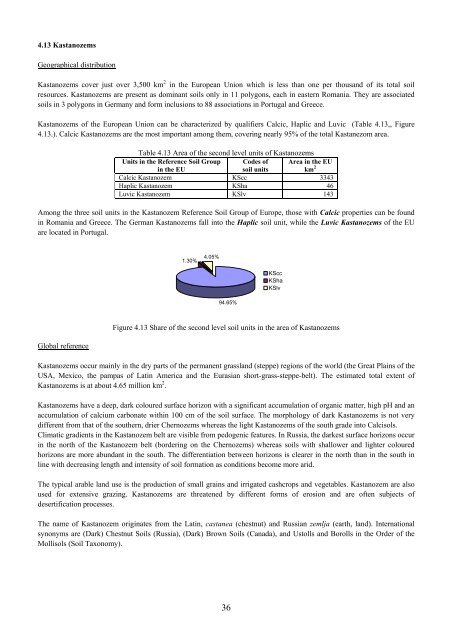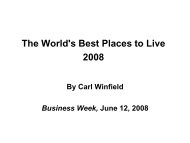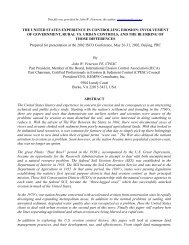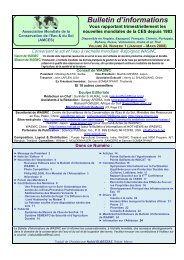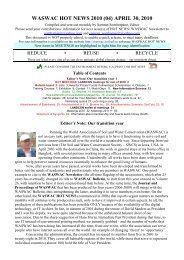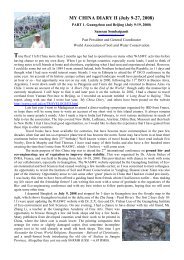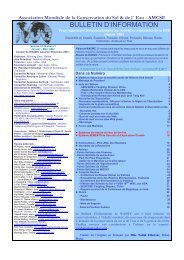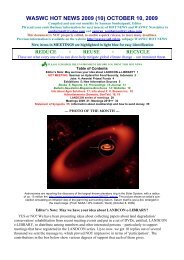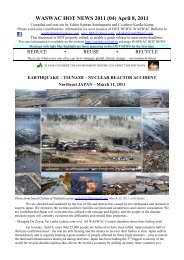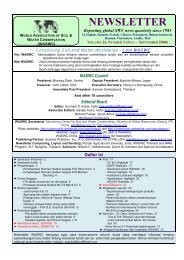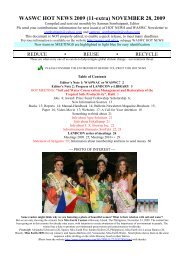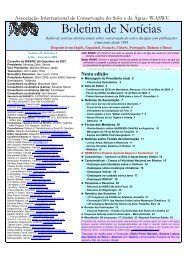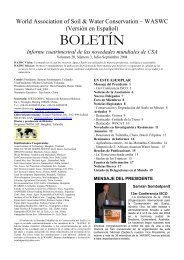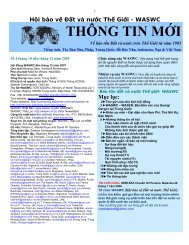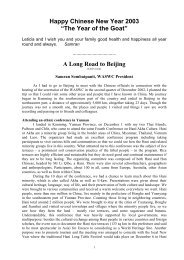Soils of the European Union - European Soil Portal - Europa
Soils of the European Union - European Soil Portal - Europa
Soils of the European Union - European Soil Portal - Europa
Create successful ePaper yourself
Turn your PDF publications into a flip-book with our unique Google optimized e-Paper software.
4.13 KastanozemsGeographical distributionKastanozems cover just over 3,500 km 2 in <strong>the</strong> <strong>European</strong> <strong>Union</strong> which is less than one per thousand <strong>of</strong> its total soilresources. Kastanozems are present as dominant soils only in 11 polygons, each in eastern Romania. They are associatedsoils in 3 polygons in Germany and form inclusions to 88 associations in Portugal and Greece.Kastanozems <strong>of</strong> <strong>the</strong> <strong>European</strong> <strong>Union</strong> can be characterized by qualifiers Calcic, Haplic and Luvic (Table 4.13,, Figure4.13.). Calcic Kastanozems are <strong>the</strong> most important among <strong>the</strong>m, covering nearly 95% <strong>of</strong> <strong>the</strong> total Kastanezom area.Table 4.13 Area <strong>of</strong> <strong>the</strong> second level units <strong>of</strong> KastanozemsUnits in <strong>the</strong> Reference <strong>Soil</strong> Groupin <strong>the</strong> EUCodes <strong>of</strong>soil unitsArea in <strong>the</strong> EUkm 2Calcic Kastanozem KScc 3343Haplic Kastanozem KSha 46Luvic Kastanozem KSlv 143Among <strong>the</strong> three soil units in <strong>the</strong> Kastanozem Reference <strong>Soil</strong> Group <strong>of</strong> Europe, those with Calcic properties can be foundin Romania and Greece. The German Kastanozems fall into <strong>the</strong> Haplic soil unit, while <strong>the</strong> Luvic Kastanozems <strong>of</strong> <strong>the</strong> EUare located in Portugal.1.30% 4.05% KSccKShaKSlv94.65%Global referenceFigure 4.13 Share <strong>of</strong> <strong>the</strong> second level soil units in <strong>the</strong> area <strong>of</strong> KastanozemsKastanozems occur mainly in <strong>the</strong> dry parts <strong>of</strong> <strong>the</strong> permanent grassland (steppe) regions <strong>of</strong> <strong>the</strong> world (<strong>the</strong> Great Plains <strong>of</strong> <strong>the</strong>USA, Mexico, <strong>the</strong> pampas <strong>of</strong> Latin America and <strong>the</strong> Eurasian short-grass-steppe-belt). The estimated total extent <strong>of</strong>Kastanozems is at about 4.65 million km 2 .Kastanozems have a deep, dark coloured surface horizon with a significant accumulation <strong>of</strong> organic matter, high pH and anaccumulation <strong>of</strong> calcium carbonate within 100 cm <strong>of</strong> <strong>the</strong> soil surface. The morphology <strong>of</strong> dark Kastanozems is not verydifferent from that <strong>of</strong> <strong>the</strong> sou<strong>the</strong>rn, drier Chernozems whereas <strong>the</strong> light Kastanozems <strong>of</strong> <strong>the</strong> south grade into Calcisols.Climatic gradients in <strong>the</strong> Kastanozem belt are visible from pedogenic features. In Russia, <strong>the</strong> darkest surface horizons occurin <strong>the</strong> north <strong>of</strong> <strong>the</strong> Kastanozem belt (bordering on <strong>the</strong> Chernozems) whereas soils with shallower and lighter colouredhorizons are more abundant in <strong>the</strong> south. The differentiation between horizons is clearer in <strong>the</strong> north than in <strong>the</strong> south inline with decreasing length and intensity <strong>of</strong> soil formation as conditions become more arid.The typical arable land use is <strong>the</strong> production <strong>of</strong> small grains and irrigated cashcrops and vegetables. Kastanozem are alsoused for extensive grazing. Kastanozems are threatened by different forms <strong>of</strong> erosion and are <strong>of</strong>ten subjects <strong>of</strong>desertification processes.The name <strong>of</strong> Kastanozem originates from <strong>the</strong> Latin, castanea (chestnut) and Russian zemlja (earth, land). Internationalsynonyms are (Dark) Chestnut <strong><strong>Soil</strong>s</strong> (Russia), (Dark) Brown <strong><strong>Soil</strong>s</strong> (Canada), and Ustolls and Borolls in <strong>the</strong> Order <strong>of</strong> <strong>the</strong>Mollisols (<strong>Soil</strong> Taxonomy).36


